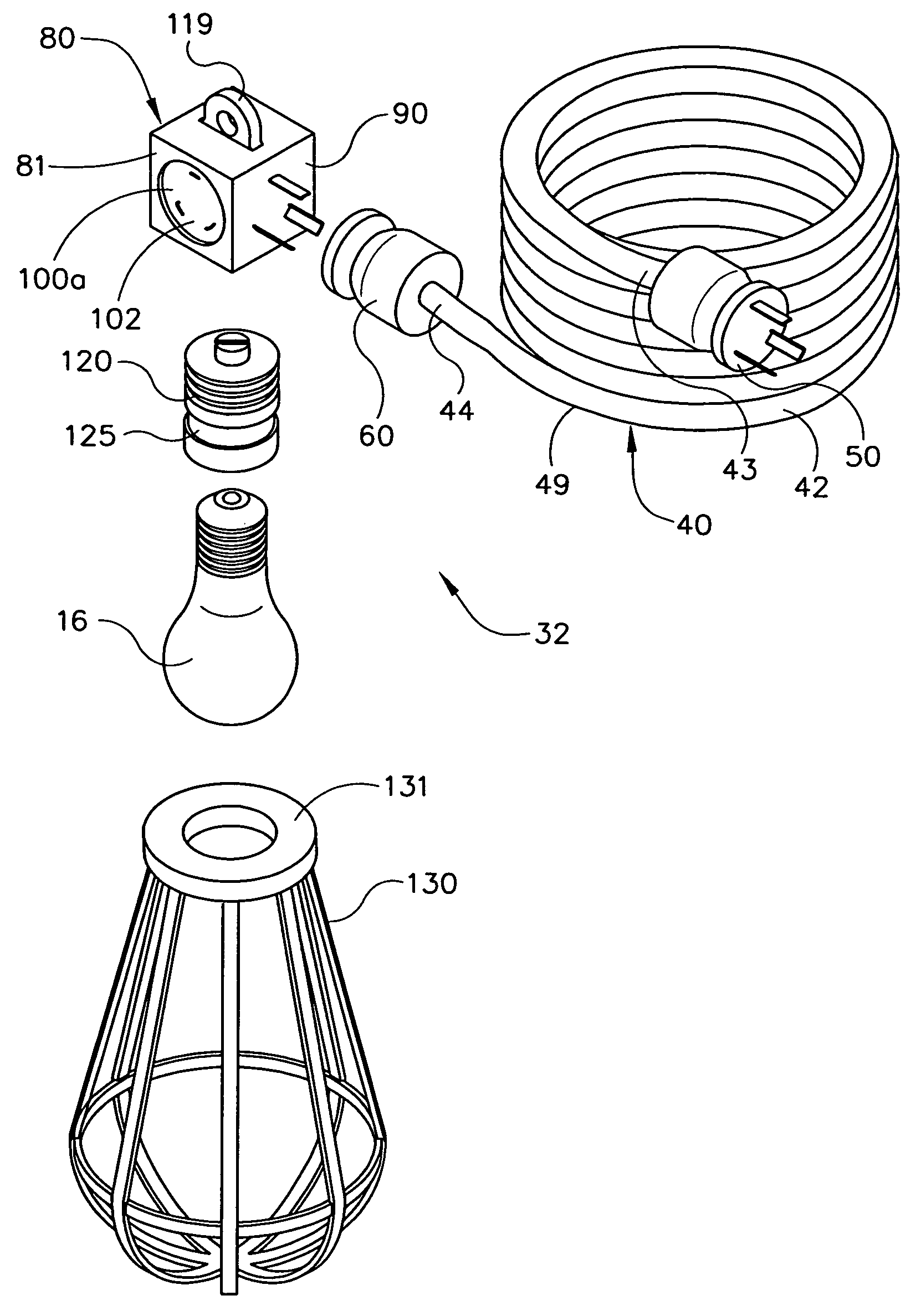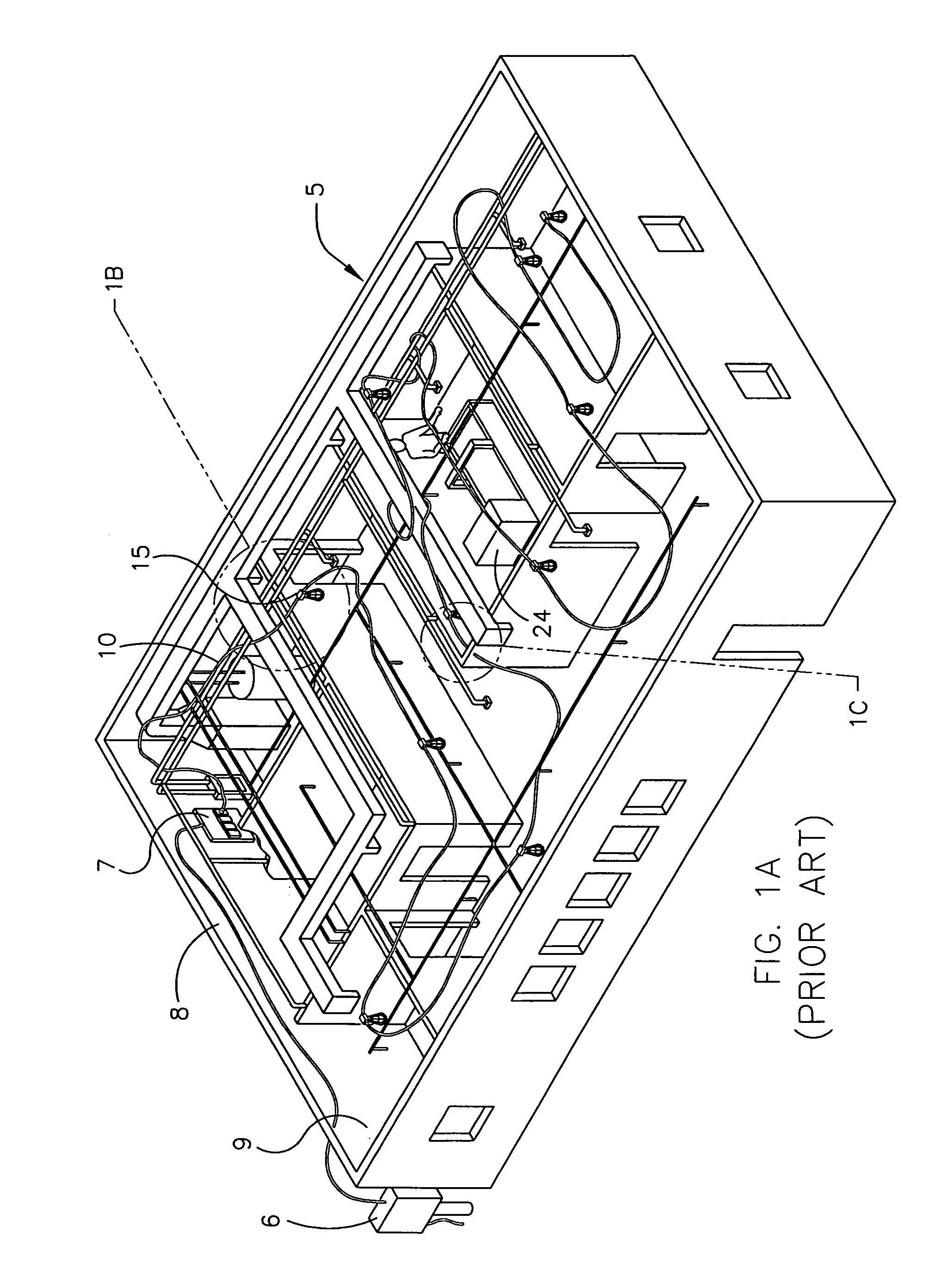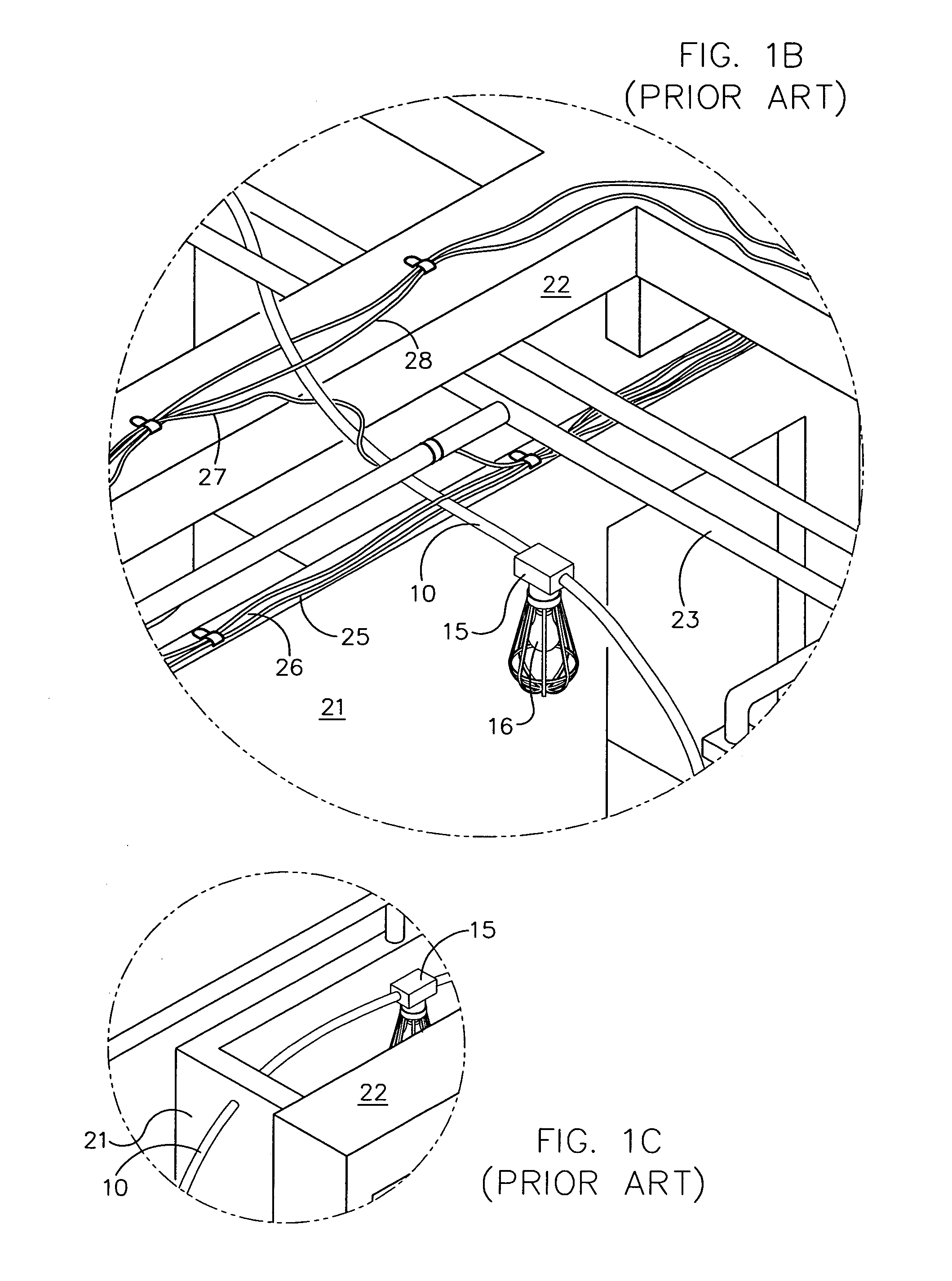A problem with temporary construction lighting stringers is that they are used once and discarded.
The relatively large lighting fixtures frequently do not fit through the small openings between the wall framing and other components through which the electric cord of the stringer extends.
Removing the stringers is often rendered impractical without
cutting or otherwise destroying the cord.
Yet, when the cord is
cut, the entire stringer is rendered unusable.
While splicing the stringer back together may be permitted under Article 527.4(G), OSHA inspectors typically frown on temporary light stringers with numerous splices because of the increased
safety risk the splices
pose.
Yet, expensive temporary stringers that have been used on more than one job site often have many splice points, which increases the risk of a hazardous situation.
As a result, new stringers are needed for each construction site, and the
waist is added in to the construction costs.
Unfortunately, workers and foremen can be unduly frugal with installing temporary lighting in order to keep costs to a minimum.
In some instances, the necessary stringers for appropriate lighting may only be installed after an accident occurs or a safety inspector requires additional lighting.
Another problem with conventional construction lighting stringers is that they come in a unitary strand having a length 50 to 100 feet.
These stringers are often too far from a specific area where detailed work needs to be done or become obscured by the interior walls and other components in the building.
Yet, the stringers can become stuck or intertwined with other components as the construction of the interior progresses.
The stringers cannot properly light the areas near the pedestal and the more remote rooms relative to the pedestal.
Although additional stringers can be plugged directly into the pedestal or into a receptacle at the end of an existing stringer, the additional stringers can overload the 20 amp breaker in the pedestal, increase construction costs and be a nuisance or safety
hazard to the workers.
The additional stringers can be particularly troublesome when they are routed through doorways, walkways or openings used by the workers or overload the electrical capacity of a particular pedestal.
A further problem with construction lighting stringers is that they must be reliable and easy to install and remove.
Yet, the need for durability and reliability conflicts with the ease with which the stringers and fixtures are installed and removed.
Although some construction stringers have been developed to help remove the light fixtures, the fixtures are in practice too difficult to remove and properly reinstall in a safe and reliable manner.
These clamps must be opened to remove the fixture from the cord, which exposes the existing holes in the cord and creates a potential for a
short circuit or
safety risk if the holes are not properly covered due to an oversight due to a busy construction setting.
Should the knife slip, one of the electrical wires can be severed or the worker can be injured.
Reattachment is often unreliable because one or both of the contacts of the clamp do not pierce and firmly engage their respective wire.
As a result, workers typically view removing and reattaching the light fixtures as unproductive and simply add another stringer.
As noted above, adding new stringers in lieu of rerouting an existing stringer increases construction costs and can overload the pedestal breaker.
The additional stringers will also need to be
cut and discarded at the end of the construction project if they become stuck or intertwined and difficult to remove.
A still further problem with construction lighting stringers is that they must comply with specific construction code requirements such as the OSHA standard 29 C.F.R. 1926.405(a)(2) for Temporary Wiring, and the National Electric Code Articles 305 and 527 for Temporary Wiring and Temporary Installations, respectively.
The codes also prohibit temporary lighting from have receptacles, particularly if the temporary
lighting system has an ungrounded conductor.
Conventional trouble lights are not appropriate for construction settings because they do not comply with OSHA and National Electric Code requirements.
The cord is not physically tough enough, so that the cord and its conductive wires could be damaged or
cut should the cord be struck by a hammer or passed over a sharp edge.
The standard outlet configuration allows workers to
plug in a tool or piece of equipment with a standard prong configuration into the receptacle of the
trouble light, which creates a potential safety
hazard.
In addition, trouble lights do not provide the necessary lighting capacity needed for a construction setting.
For these and other reasons, trouble lights would not be appropriate or approved for temporary lighting applications under Article 527.2(B) for the vast majority if not all construction conditions, particularly if they were connected in series or in a multi-
branch layout.
 Login to View More
Login to View More  Login to View More
Login to View More 


